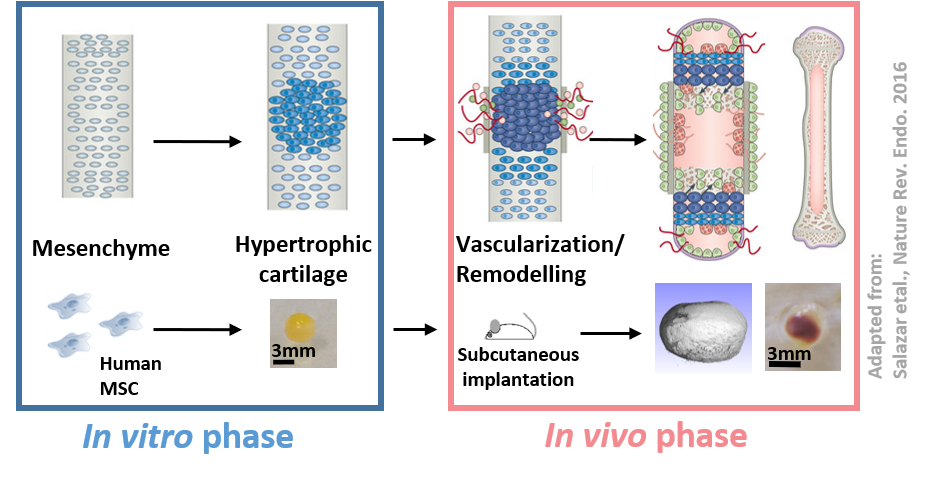Deciphering the cellular / molecular mechanisms involved in Bone formation
During development and repair, bones pre-dominantly form through the endochondral ossification route. This involves the condensation of mesenchymal cells, forming a cartilage tissue progressively vascularized and remodeled into a mature Bone Organ, hosting functional hematopoiesis.

The endochondral process has been successfully recapitulated using human Mesenchymal Stromal Cells (hMSC). By priming hMSC in vitro to form cartilage, the tissue naturally remodels into bone and bone marrow following in vivo implantation in mice.

Using gain/loss of functions in hMSC, we can investigate the role of the modified gene/pathways on the subsequent events of the endochondral route. Study in various scenarios (e.g. injury, aging, humanized mouse strains) will enable the acquisition of context-specific knowledge.
Supporting litterature
• Scotti, Bourgine et al., PNAS 2013
• Bourgine et al., PNAS 2015
• Fritsch*, Pigeot*, Bourgine et al., Experimental Hematology 2018

